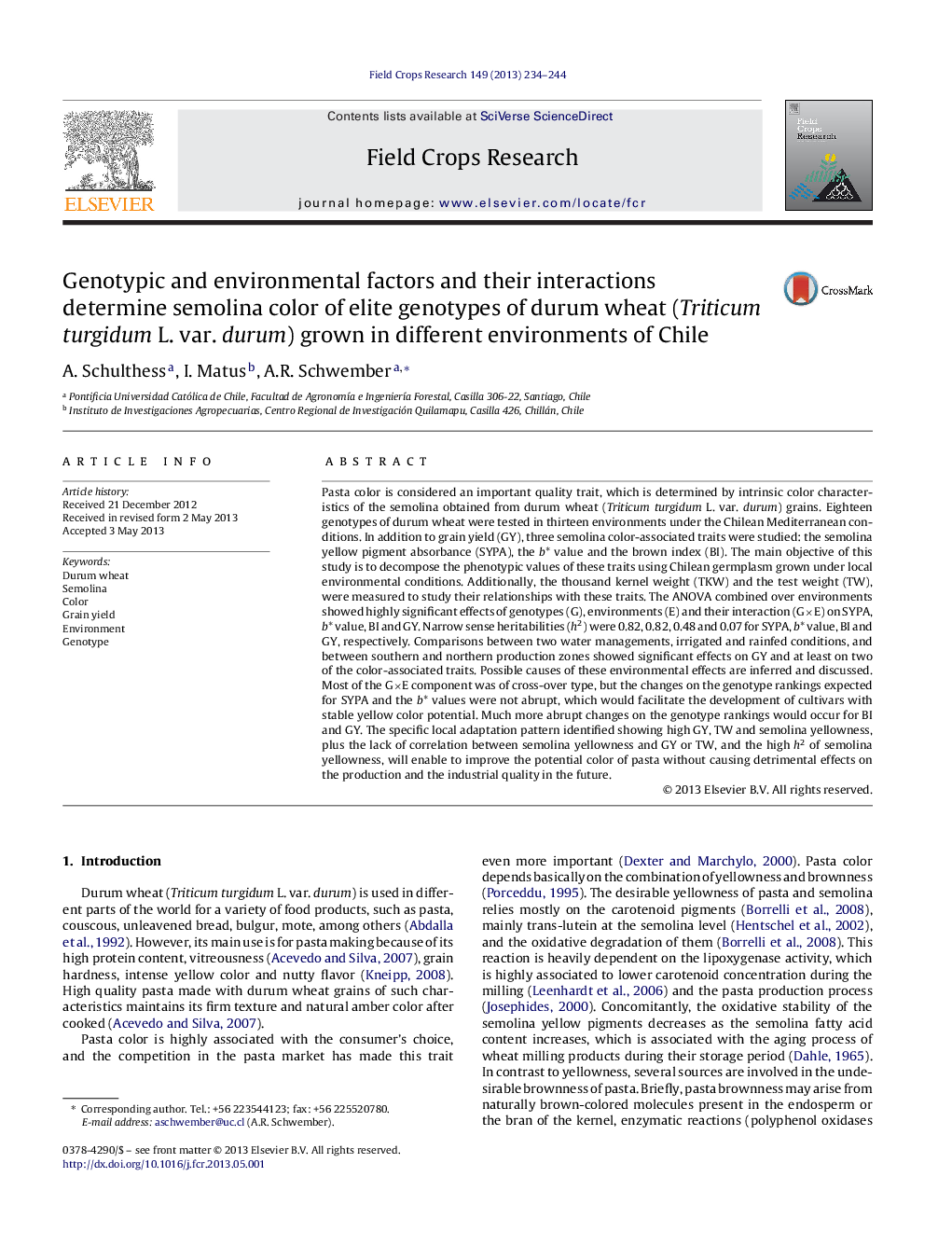| کد مقاله | کد نشریه | سال انتشار | مقاله انگلیسی | نسخه تمام متن |
|---|---|---|---|---|
| 6375272 | 1624714 | 2013 | 11 صفحه PDF | دانلود رایگان |
عنوان انگلیسی مقاله ISI
Genotypic and environmental factors and their interactions determine semolina color of elite genotypes of durum wheat (Triticum turgidum L. var. durum) grown in different environments of Chile
دانلود مقاله + سفارش ترجمه
دانلود مقاله ISI انگلیسی
رایگان برای ایرانیان
کلمات کلیدی
موضوعات مرتبط
علوم زیستی و بیوفناوری
علوم کشاورزی و بیولوژیک
علوم زراعت و اصلاح نباتات
پیش نمایش صفحه اول مقاله

چکیده انگلیسی
Pasta color is considered an important quality trait, which is determined by intrinsic color characteristics of the semolina obtained from durum wheat (Triticum turgidum L. var. durum) grains. Eighteen genotypes of durum wheat were tested in thirteen environments under the Chilean Mediterranean conditions. In addition to grain yield (GY), three semolina color-associated traits were studied: the semolina yellow pigment absorbance (SYPA), the b* value and the brown index (BI). The main objective of this study is to decompose the phenotypic values of these traits using Chilean germplasm grown under local environmental conditions. Additionally, the thousand kernel weight (TKW) and the test weight (TW), were measured to study their relationships with these traits. The ANOVA combined over environments showed highly significant effects of genotypes (G), environments (E) and their interaction (GÃE) on SYPA, b* value, BI and GY. Narrow sense heritabilities (h2) were 0.82, 0.82, 0.48 and 0.07 for SYPA, b* value, BI and GY, respectively. Comparisons between two water managements, irrigated and rainfed conditions, and between southern and northern production zones showed significant effects on GY and at least on two of the color-associated traits. Possible causes of these environmental effects are inferred and discussed. Most of the GÃE component was of cross-over type, but the changes on the genotype rankings expected for SYPA and the b* values were not abrupt, which would facilitate the development of cultivars with stable yellow color potential. Much more abrupt changes on the genotype rankings would occur for BI and GY. The specific local adaptation pattern identified showing high GY, TW and semolina yellowness, plus the lack of correlation between semolina yellowness and GY or TW, and the high h2 of semolina yellowness, will enable to improve the potential color of pasta without causing detrimental effects on the production and the industrial quality in the future.
ناشر
Database: Elsevier - ScienceDirect (ساینس دایرکت)
Journal: Field Crops Research - Volume 149, 1 August 2013, Pages 234-244
Journal: Field Crops Research - Volume 149, 1 August 2013, Pages 234-244
نویسندگان
A. Schulthess, I. Matus, A.R. Schwember,